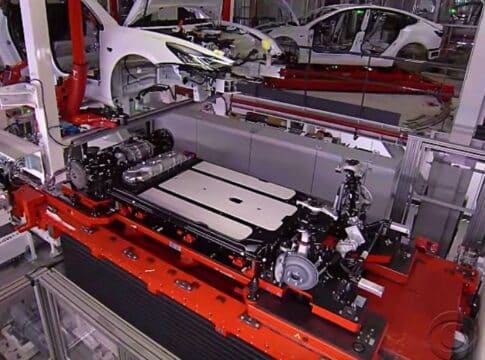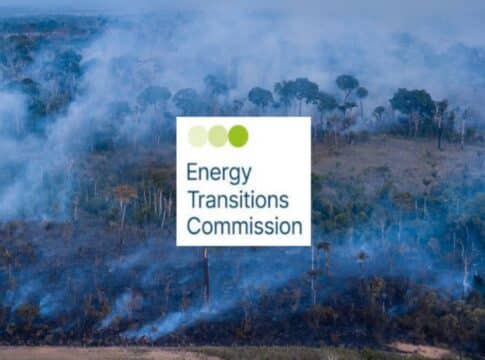Tesla Carbon Credits Revenue Up by 12%
Tesla, once again, is grabbing attention with its Q1 2023 revenue from the sales of carbon credits alone, not to mention income from selling electric vehicles (EVs).
The automaker recorded a 12% increase from the prior quarter’s sales, with $521 million in this first quarter compared to $467 million in Q4 2022.
Tesla has been earning revenues from the sales of its carbon credits for the previous years, reported a whopping $1.78 billion in 2022 alone.
Carbon credits, also known as carbon allowances or carbon offsets, are a way for companies to offset their footprint by investing in carbon reduction projects. These credits can be sold to other firms that struggle to meet emissions standards set by regulatory bodies like the California Air Resources Board or CARB.
Towering Up: Tesla Carbon Credits Revenue
Though Tesla has managed to improve its bottom line in previous quarters, carbon credit revenue continues to be a significant factor in Tesla’s earnings. In the current tough macro environment, Tesla would be in the red were it not for carbon credits – something that hasn’t happened in the last two years.
Tesla has been selling carbon credits to its peers such as Chrysler. It reportedly bought US$2.4 billion worth of Tesla’s carbon credits, accounting for most of the company’s sales in past years.
In 2019, the company made headlines when it earned a total of $600 million from selling carbon credits to fellow automakers that didn’t meet emissions standards set by CARB.
Buying credits from Tesla allowed those companies to comply with regulations without making big changes in their own operations.
Reducing GHG emissions requires addressing both energy generation and use. This is what the transportation and energy sectors have been focusing on to slash their emissions.
Same as Tesla, other carmakers such as Audi, Porsche and Chrysler are also ramping up their electrification plans. Audi, for instance, aims to have 30 EV models by 2025 and have a 40% volume share of the EV market by that year.
Tesla has seized the net zero market through various revenue streams including EVs, solar installations, and carbon credits. But the rise of Tesla’s carbon credits sales over the years has significantly contributed to its revenues and profits.
Where Do All Tesla Carbon Credits Come From?
Tesla’s carbon credit income is all thanks to its EV production, which the company has also been the industry leader. The carmaker has been the top producer of innovative and eye-catching EV models since it started operating 20 years ago.
In the first 3 months of the year, Tesla produced about 441,000 vehicles at four factories. Deliveries came in at about 423,000, representing a 36% increase year-over-year.
Tesla’s mission is to speed up the world’s transition to sustainable energy by electrifying transportation and the global economy.
Last month, Tesla proposed a path to reach a sustainable global energy economy through end-use electrification and sustainable electricity generation and storage. It’s outlined in the company’s paper “Master Plan Part 3 – Sustainable Energy for All of Earth”, with assumptions and calculations behind the proposal.
According to its analysis, the electricity sector gets 65 PWh per year of primary energy, including 46 PWh/year of fossil fuels. If the grid sources its power from renewable energy, the sector would need only 26 PWh/year of sustainable electricity generation.
In addition to producing EVs, Tesla also runs a solar panel installation business and sells energy storage systems. These operations are part of its quest for sustainability, which all generate carbon credits by avoiding carbon emissions.
Turning on the Switch of EVs
Electric vehicles are about 4x more efficient than internal combustion engine (ICE) vehicles, as per Tesla calculation. That’s mainly due to EVs’ higher powertrain efficiency, regenerative braking capability, and optimized platform design.
The figure holds true across vehicle types – passenger vehicles, light-duty trucks, and Class 8 semis as shown in the table.
For example, Tesla’s Model 3 energy consumption is 131MPGe compared with a Toyota Corolla with 34MPG, or 3.9x lower. The ratio is even more when factoring in upstream losses such as those from extracting refining fuel energy use.
TESLA MODEL 3 vs. TOYOTA COROLLA ENERGY USE
Electrifying the transportation sector globally will reduce use of fossil fuels by 28 PWh each year. Applying the 4x efficiency factor for EVs, there will be an additional demand of ~7 PWh a year for electricity.
According to a research body, the global EV market size accounted for US$205 billion in 2022 and will grow to around US$1.7 trillion by 2032.
Source: Precedence Research
In 2021, global EV purchases grew to 6.6 million, up from 3 million a year earlier, according to the International Energy Agency (IEA). EVs got a 9% share of the entire market and represented the total growth in global car sales.
Tesla still took the lead in the U.S. EV market last year. Its cars are powered solely by the electrical charge stored in batteries. Technically, they’re called Battery Electric Vehicles or BEVs.
One of the major reasons for Tesla’s dominance in the sector is this: Lithium ion batteries have the highest charge capacity among existing battery formulations. Thus, it makes Tesla EVs practical to have and to drive.
As the world races to net zero emissions by 2050, electrification not just in transportation but across sectors is critical. Does this mean that demand for lithium will also increase?
The Rise of the “White Gold”
Lithium is a non-ferrous metal known as “white gold”. It is one of the key components in EV batteries, alongside nickel and cobalt.
A lithium-ion battery pack for a single EV contains about 8 kg of lithium, according to the US Department of Energy. But it can also depend on the battery size. A Tesla Model S’ battery, for instance, has over 62 kg of lithium.
The leading carmaker used around 42,000 tons of lithium carbonate equivalent in 2021. That’s more than 5x the combined lithium used by Ford and GM, according to BNEF data calculations.
Global lithium production reached 100,000 tons or over 90 million kg last year. Meanwhile, the worldwide lithium reserves are about 22 million tons – or 20 billion kg, as per the US Geological Survey (USGS).
While China owns 70% to 80% of the entire supply chain for EVs and lithium-ion batteries, Chile has the world’s biggest lithium reserves. The South American nation is one of the so-called “Lithium Triangle” countries, along with Argentina and Bolivia. A little below 60% of Earth’s lithium resources are found in those three American countries.
The IEA’s 2050 Net Zero scenario says the world has to have 2 billion battery electric, plug‐in hybrid and fuel-cell electric light‐duty vehicles on the road by that date.
In Tesla analysis, lithium comprises 20% of the materials needed to deliver the energy storage in batteries for EVs relative to 2023 USGS data.
Statista projected the rising global demand for the white gold until 2030, increasing by over 700% from 2019.
Batteries will account for the bulk of lithium demand by the end of this decade, fueling the EV revolution.
The post Tesla Carbon Credits Revenue Up by 12% appeared first on Carbon Credits.



